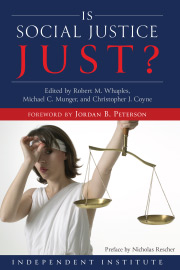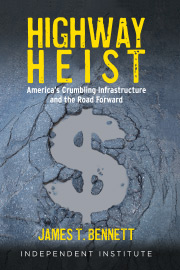The Problem With the Power Plant Rule
Earlier this year, the EPA (Environmental Protection Agency) issued a proposed rulemaking on New Source Performance Standards for greenhouse gas (GHG) Emissions from New and Reconstructed Electric Utility Generating Units (EGUs). It is colloquially known as the “Power Plant Rule.”
This rulemaking suffers from a host of flaws, but one issue—which I focused on in the Institute for Energy Research public comment on the rulemaking—is the issue of grid reliability and the failure to account for a concurrent rulemaking that will have a significant impact on the purview of this rule.
The other proposed rule in question is the Multi-Pollutant Emissions Standards for Model Years 2027 and Later Light-Duty and Medium-Duty Vehicles Rule, colloquially known as the “Tailpipe Rule.” This rule would require a very low fleetwide average for vehicle emissions for model years 2027 and later. In practice, this would make the manufacture and sale of ICE (Internal Combustion Engine) vehicles difficult, if not impossible. The Biden administration has made clear that the intention of the rule is to accelerate the transition to Electric Vehicles.
A rule that would cause a significant portion of the car fleet to transition from gasoline to reliance on the electricity grid would definitionally have an impact on grid requirements and, by extension, on both the volume and variety of generation that the grid requires. Grid reliability might sound like a nebulous and distant concept that will be dealt with far from home, but the impacts of even short blackouts can be both deadly and inconvenient. Power grids mostly fail when it’s very hot or very cold, when people are least equipped to cope without electricity’s ability to insulate them from the weather.
Grid reliability issues are also incredibly costly, and the costs of their disruption are not born only at the utility level. They cause food in people’s refrigerators and freezers to spoil and need to be replaced. Think about how much it would cost you to replace everything in your refrigerator and freezer right now. What if that were happening several times a year? What about a few times a month? These costs would add up quickly and would be most difficult to bear for those who are already struggling to pay for everyday necessities.
Now consider that many employers would be forced to close without electricity. Some people are salaried and might get a free day off of work, but what about unsalaried hourly workers? For many people, this would mean periodic unexpected days without work (and without pay). The economy wide impacts of this are massive, and the personal impacts are daunting. Grid reliability is essential to the functioning of our economy and everyday lives.
Not all electricity sources are equally reliable. In order to adequately meet peak demand, baseload sources like natural gas, coal, and nuclear are needed. The Power Plant Rule would have a serious impact on natural gas generation in addition to phasing out coal generation. The EPA study accompanying the Power Plant Rule didn’t take into account the increased volume of electric vehicles on the grid that the Tailpipe Rule would create. This concurrent rulemaking would clearly have an impact on the ability of the grid to meet demand. One rule will raise the demand for electricity, while the other will decrease supply, but we’re to believe that these rulemakings are not substantively related to one another enough to necessitate an analysis from EPA on their compounded impacts.
On the issue of reliability, more broadly, a number of analyses have been performed that demonstrate the flaws in the proposed rulemaking.
The Center of the American Experiment has an excellent analysis of what the rule would do, particularly to the portion of the grid operated by MISO (Midcontinent Independent System Operator). In their analysis, Isaac Orr and Mitch Rolling found that the rule would impose blackouts in MISO, as well as costing $246 billion through 2055 when the economic costs of blackouts and other impacts were taken into account. Their analysis accounted only for the impacts on the portion of the Grid operated by MISO, which covers 15 states and the Canadian province of Manitoba.
From this, it’s reasonable to conclude that grid impacts would be far outside of the scope of the supposed benefits of the rulemaking, given that the EPA’s estimated annual net benefit of the rule is $5.9 billion and $246 billion over the period from now to 2055 is $7.7 billion, again in the MISO jurisdiction alone.
The costs of this rule to grid reliability would outweigh the benefits of the rule, and studying the extent of those costs is made more difficult by the lack of public availability of the model and data used by EPA.
A rulemaking with impacts this broad should have taken grid reliability concerns more seriously and acknowledged the impacts of the concurrent Tailpipe Rule. Could it be that the Biden administration’s abstract commitment to the vision of an all-electric future is preventing a candid assessment of the cost, in dollars and dysfunction, of getting there?
This article was adapted from “The Problem With the Power Plant Rule,” originally featured on Catalyst. You can read the original here.


















